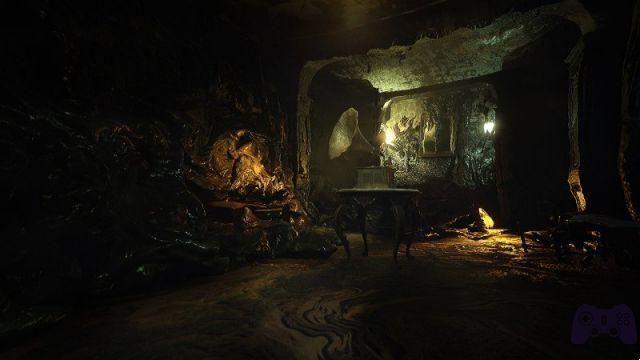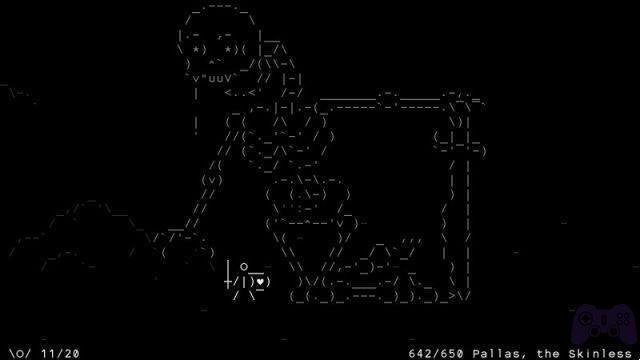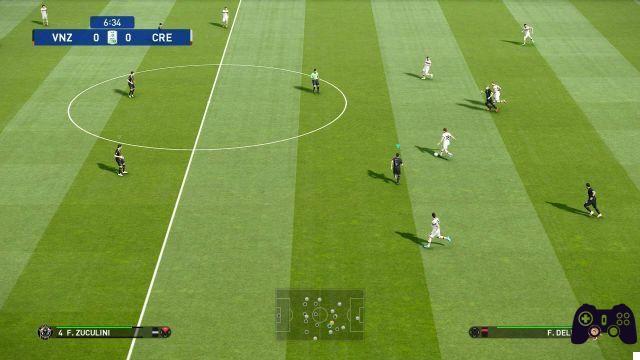The retrofuturistic artistic design of Atomic Heart could not leave indifferent fans of science fiction and dystopias, attracted by a product that promised to catapult the user to a uchronia in which the Soviet Union, during the 50s, became the first world power. thanks to unprecedented technological development.
There are many other reasons that have recently contributed to giving visibility to the production of Mundfish, a rookie team working on their promising creature since 2017, some of which are anything but positive. From accusations of having passed off vertical cuts as game trailers, to those of having forced employees into intense crisis phases, to the sinister and dystopian inference according to which the game serves exclusively to collect data for the Russian government, the project has gone through several critical moments.
Without wanting to go into the depths of issues that have little to do with the quality of the experience in themselves, but that do not deserve all the attention they deserve in other places, limiting ourselves to having to When analyzing Atomic Heart we cannot help but define it in all aspects as a debut title, with so much potential, but also with the naiveties that a first work inevitably brings with it. We are talking about a very respectable debut, of course, but it is undeniable that behind that rather shiny and thick varnish, hides a sometimes lame FPS, a game with style and absolutely capable of entertaining, let's be clear, but at the same time imperfect and inconsistent.
In this Atomic Heart Review We will explain in detail what works and what doesn't in this FPS that, in any case, will inevitably attract the attention of fans of the genre.
More beautiful to read than to experience.
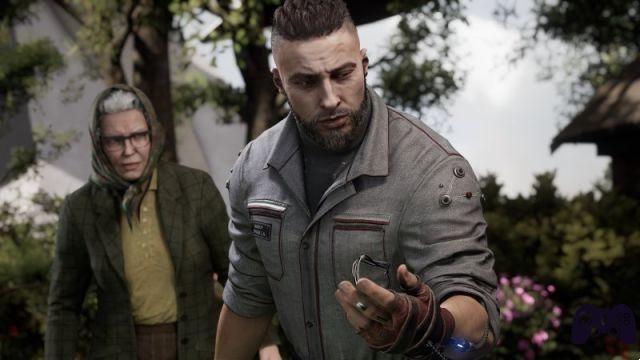
Atomic Heart describes the limits of a uchronia in which theSoviet Union emerged as the world's leading power in the 50s, a dominance made possible by unprecedented technological development. We are not talking about simple supercomputers that came into history before their time. The nation of which Agent P-3, the protagonist of the adventure, is the proud inhabitant, boasts of flying cities, robots capable of carrying out any task independently, gigantic machines capable of digging underground tunnels with extreme simplicity.
What the Mundfish game offers, in a nutshell, is a retrofuturo In every sense, a golden age in which the conquest of the Solar System is one step away and, more than anything, the unification of all humanity in a kind of hive mind, in perfect synthesis with the androids, thanks to the Collective, a neural network, which, although it keeps each person's individuality intact, is one step away from becoming operational just when the real adventure begins.
The idyll is shattered as soon as Agent P-3 sets foot in the Structure 3826, the flagship of the Soviet Union, as well as the main industry for the production of robots, an immense laboratory in which new technologies are studied, a museum center that contains and certifies the power and foresight of the Communist Party. Sent on a simple routine mission, our man will have to face an unprecedented crisis that risks discrediting his country in the eyes of international states, as well as ruining the good intentions of the Kollectiv.
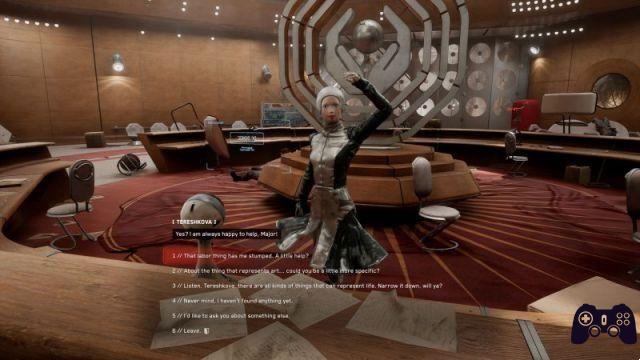
The robots, in fact, for no reason have rebelled and exterminated most of the technicians, scientists and civilians who inhabited Structure 3826 which, winding through several buildings connected to each other by roads and railway networks of magnetic yeast, represents throughout the world. game map.
The plot, or rather the narrative management of Atomic Heart, is the aspect in which it is easiest to recognize the Immense potential, but also many shortcomings. and inconsistencies in production. From this point of view, a line of demarcation can be clearly drawn between what works and what leaves something to be desired.
The adventure of Agent P-3, his desperate fight in an attempt to save what can be saved, takes a lot of convincing. There is no shortage of twists, of course, but from this point of view all of Mundfish's inexperience is evident, perfectly comfortable in conceiving brilliant ideas, less so when it comes to giving them a tangible and concrete form.
La digital addressTo begin with, it tries by all means to show off its own style, composed of distorted shots and sudden close-ups, but ends up being unnecessarily chaotic, unable to underline the most significant passages with the necessary pathos.
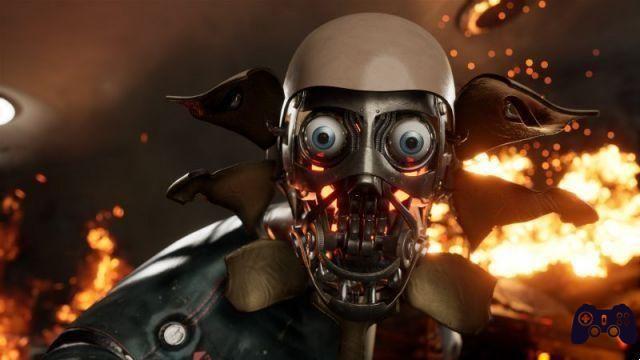
self script He often trips over himself. Agent P-3, although this is partially justified at a certain point in the story, rather than a convinced citizen of the Soviet Union, acts and above all talks like the most carefree and badass Yankee in any action movie of the 90s . . Furthermore, the characters that revolve around him do not cross the screen, but are configured as mere specks subjected to a story that develops in a confusing and incomplete way. Conclusive proof of this is the sensitive glove worn by the protagonist, who continually offers explanations at every step, enunciating with suspicious omniscience the thoughts, actions and motivations of the other characters involved, soon creating a narrative paradox that is difficult to accept.
However, The world of Atomic Heart remains extremely fascinating. and not only thanks to a convincing artistic design, capable of giving life to reassuring and at the same time extremely disturbing robots, claustrophobic military bases, museums with the appropriate retro design and wide panoramas dominated by splendid structures and statues annihilating due to the gigantic dimensions they display. . In fact, the game's plot is saved by the immersive emergent narrative. Each scenario clearly bears witness to the horror that took place in Structure 3826, each holographic computer expands the imaginative limits of the world created by Mundfish, subtitles, texts, voice notes combine to illustrate the technological achievements of the Soviet Union, the consequences of the Second World War, the successive evolutionary stages that humanity is preparing to undertake in these alternative fifties.
The end result, all things considered, is controversial. On the one hand, we almost lose interest in the intricate and poorly explained conspiracy underlying the Kollectiv. On the other hand, one is continually intrigued by a world that is extremely coherent with itself, well conceived, excellently transmitted through small testimonies that describe a living, evocative and credible world.
When the club is better than the rifle
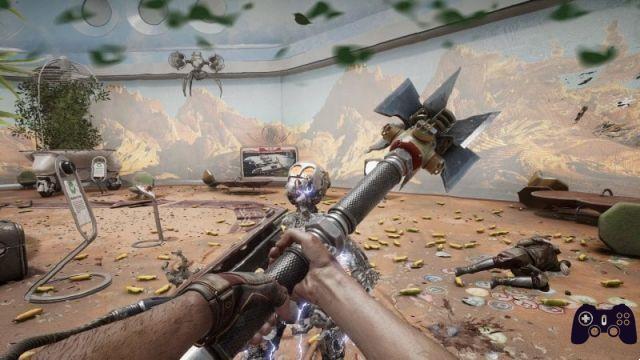
What naivety It also affects the gameplay. which can only nominally be compared to the much more common and profound of the first Bioshock, a term of comparison with which Atomic Heart has often been compared.
The basic assumption, in general terms, is the same. We explore, we solve puzzles, we fight also based on supernatural powers that the good Agent P-3 develops by exploiting Polymers, a compound that, through the aforementioned glove, allows our agent to freeze, lift and slow down the enemies hit by his jet. Unfortunately, as we will say shortly, even in this case not everything works correctly.
Compared to the first Bioshock, Atomic Heart focuses on a decent-sized map freely explorable. Most weapon upgrades, for example, are tied to very specific side quests that will ask you, more often than not, to stick your nose where you shouldn't and also perform minimal recoil.
Each area is patrolled by androids, robots of different shapes, cameras that, even if destroyed, can be repaired by automatons designed for this purpose. The predominant feeling of urgency, of constant insecurity It gives a particular aftertaste to the exploratory phases of Atomic Heart, but this feeling does not seem to be entirely innate in the gameplay that the experience offers.
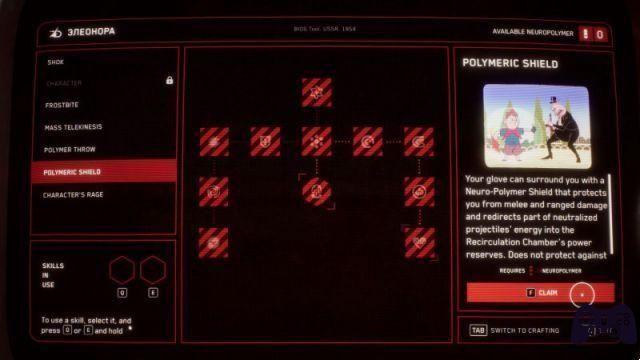
Especially at higher difficulty levels, the ammunition is a rarity and it doesn't take long to dry. Not bad on most occasions, a real nightmare when you end up running into a semi-boss with whom melee is anything but effective.
Yes, because the melee attacks They are not at all secondary to the gameplay of the game. Not only are there more blunt objects you can unlock and use, but most of the time you'll have no other chance than to use your hands to take down a particularly tough enemy. From this point of view everything works very well. Although you lose your bearings from time to time, each cut releases the correct response and the animations allow you to understand when damage has been dealt and when, instead, you have completely missed the target.
Then they think about combining it with knife fighting. very few stealth phases. In theory, you can always jump behind your opponents to perform silent and deadly takedowns. If in the open world phases this is an additional strategy that is sometimes effective and useful for the cause, in the main missions, which are much more linear, it is really difficult not to be discovered as well and especially due to the lack of cover . hide behind In practice, there is a constant feeling that this feature was introduced late in development, when most of the level design had already been designed.
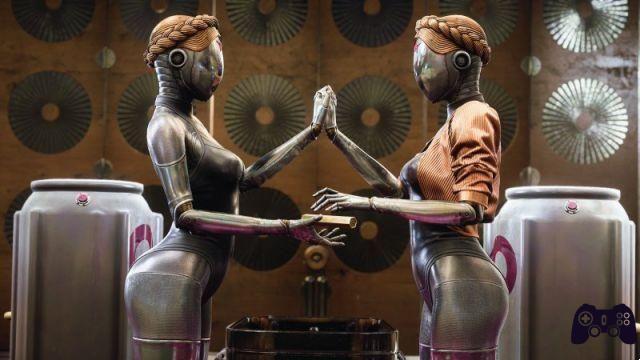
Similar sentiment for the much vaunted the elaboration of, which during the presentation of the project seemed like it could give extreme freedom to the player. Unfortunately, when the facts prove it, it all ends up in a series of pre-packaged upgrades and weapons that can be obtained at the price of a certain amount of recovered resources by exploring the environments and eliminating enemies. Between shotguns, batons, machine guns and pistols capable of exploding electrified projectiles, Atomic Heart certainly does not stand out for the imagination of its arsenal, but the numerous upgrades available still instill a nice progression in character improvement.
Fun, but clumsily chaotic
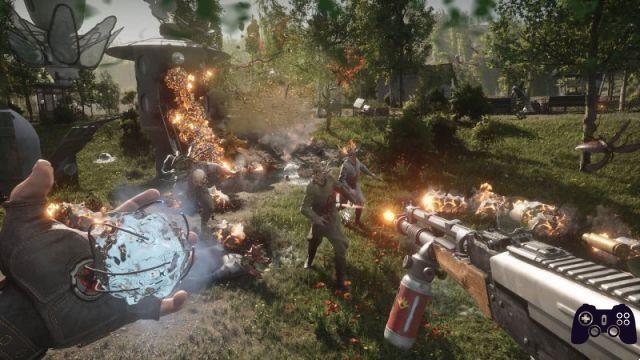
Agent P-3, as anticipated, also enjoys a number of unlockable powers through a complex and slightly confusing skill tree. Beyond bonuses to health and athletic abilities, which will make it easier to explore and escape from robotic patrols, ours can also increase affinity for the use of Polymers.
By selecting up to two skills at a time, the avatar can freeze enemies, create a defensive shield, slow them down, and use telekinesis to immobilize them a few inches off the ground. By using the powers in combo you can create some pretty cool effects, but unfortunately, unlike what happened in Bioshock, you will rarely use these supernatural abilities.
Cooldowns cripple the player's potential strategies, but what's worse is that these abilities often offer very limited advantage. Although, especially at the highest difficulty level, it is essential to exploit the opponents' elemental weaknesses, the often furious pace of the game does not go well with a mechanic that, no matter how trained and prepared one is, presupposes a minimum tactical skill. preparation to bear fruit.
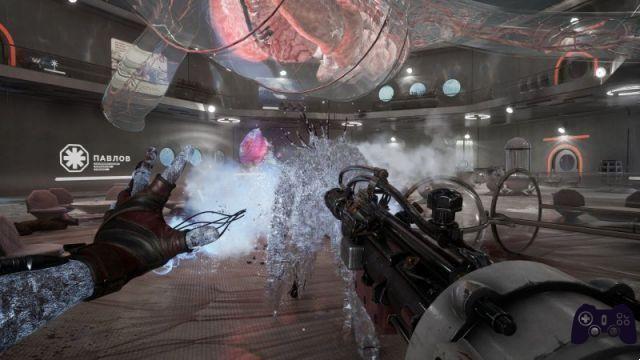
Atomic Heart, in fact, reveals a double soul. At first everything works almost perfectly, with very fluid progression and manageable confrontations both shooting and attacking enemies at close range. Unfortunately, after half the adventure, the game chooses to become Doom Eternal, exaggerating of course, pitting Agent P-3 against hordes of attacking enemies without allowing a moment's respite.
The gameplay, unfortunately, is marred by mechanics that clearly aren't designed to handle certain beats. Hand-to-hand combat becomes confusing, using polymers correctly becomes difficult, chronic bullet shortages make everything even more frustrating. The same IA who manages the enemies, does nothing to improve the situation, stretched and limited as he is to launch any threat within his reach with his head down. In short, there is a lack of balance, also thanks to a Level design that flattens greatly., also because the environmental puzzles become simpler and less glossy.
The feeling you have, after half the game, is that the The developers had finished most of the ideas., but he did not at all want to give up a longevity that offered more than twenty hours of entertainment, time necessary only to complete the main mission. Running out of enemy types to send to the front, Mundfish has decided to overwhelm the user with hordes to take on one after another. With level design ideas finalized, we found ourselves exploring hallways and rooms of anonymous underground bases. Having lost the compass of the perfect progression between gunplay and the powers derived from the Polymers, Atomic Heart loses adrenaline-filled battles that mortify the depth of the game.
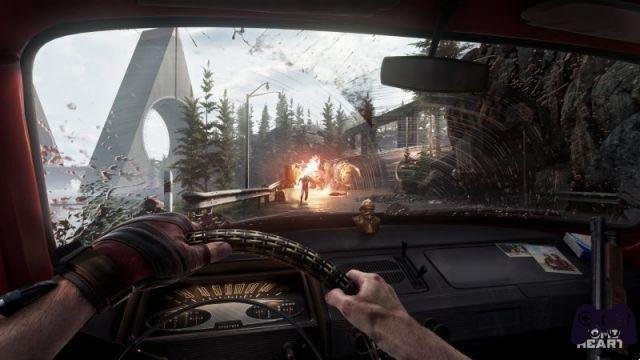
The regret is even more vivid the more you face a boss fight that is nonetheless fun, or find yourself in rare sections where exploration and confrontations with small groups of robots keep the interest alive and honor a Undeniably intriguing and functional gameplay mechanics.
Also in the technical front not everything works well. When playing on PC, with all settings set to ultra, Atomic Heart offers some truly fascinating views. If we have already expressed ourselves positively about the artistic design, even in terms of simple brute force, the overall polygonal complexity, the quality of the textures and the excellent effects surprise. It's a shame that everything weighs on the fluidity of the frame rate. Nothing debilitating, but it's not uncommon to see the game break. What's worse, even after the second half of the adventure, we encountered several bugs and even some fall, a sign that immediate updates are needed to fix the code here and there.
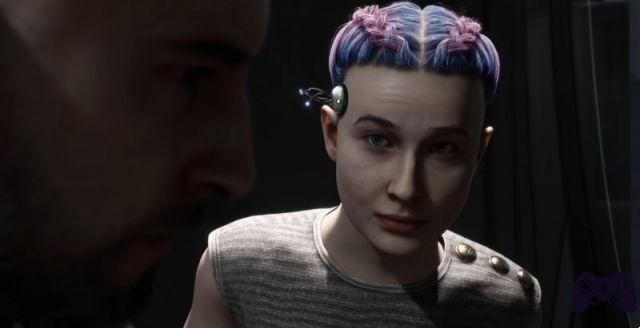
It also deserves a comment. Sonoro. If the dubbing - even in our language - convinces, if the effects are well reproduced, the soundtrack denotes the same underlying confusion that the production as a whole suffers from. The idea that the powerful algorithms of this retrofuture can guess the music of the future is an interesting way to alternate classical music with metal, dubstep and dance pieces. It's a shame, however, that the musical accompaniment often doesn't follow the action of the game at all. You will find yourself fighting in absolute silence or calmly walking through the bases of Structure 3826, literally stunned by the screeching of electric guitars and the sound of drums.
Conclusions
Tested version PC with Windows digital delivery Steam, playstation store, Xbox Store Price 59.99 € / 69.99 € Holygamerz.com 7.5 Readers (132) 7.7 your voteAtomic Heart is by all accounts a good, but imperfect debut title. It lays the narrative foundation for a believable and very interesting game world, but conveys a very confusing and incomplete plot, driven by continuous explanations. Architects a derivative game, of course, but functional in itself, to then be diluted in overwhelming and uselessly adrenaline-filled fights. It introduces a system of supernatural powers in the vein of Bioshock, but then renders them ineffective when it matters most. It boasts a convincing art direction and a respectable graphics sector, but suffers from continuous drops in frame rate and shows its side to bugs and crashes. In short, we are not facing a perfect FPS. Still, there is character, there is at least an intriguing panorama that can only attract fans of science fiction, dystopias, games similar to the aforementioned Bioshock, which remains an unattainable model for the Mundfish guys. Ultimately, the best way to enjoy Atomic Heart is to do so without expecting great things. Because between stumbles and stumbles, it will surely surprise you thanks to the large map that you will want to explore far and wide in search of secondary missions and improvements; to the arsenal certainly not original but pleasant; to an emergent narrative that paints the boundaries of a truly intriguing imaginary world. It could have been a lot better, no doubt, but this is certainly a good game with some flaws that you'll have to deal with.
PRO
- artistic inspiration
- A fascinating emerging narrative
- Tasty shootouts, especially for melee attacks.
AGAINST
- The plot is not entirely convincing.
- The level design does not adequately support game progression.
- Various errors and glitches




